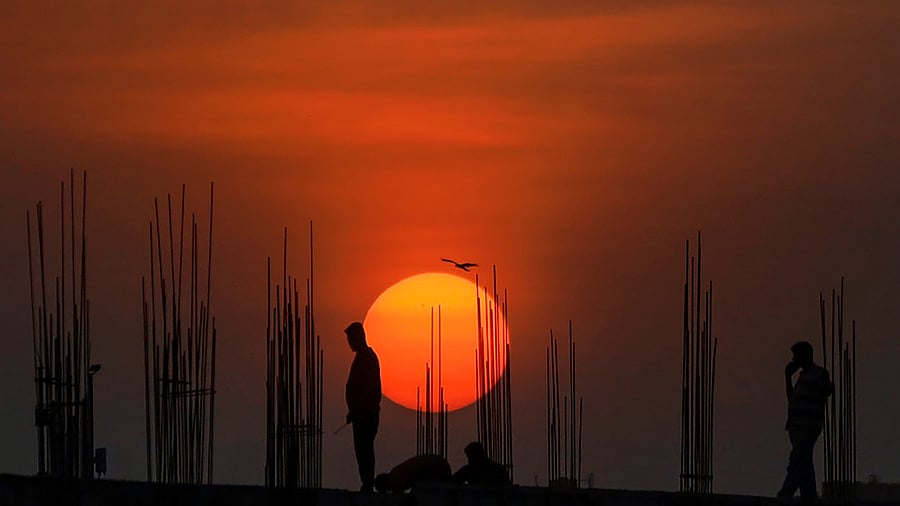
Bengaluru: Construction workers silhouetted against the setting sun, in Bengaluru, Friday, Jan. 12, 2024. Representative image.
PTI
The findings of a recent study, indicating that sunshine hours have declined in most parts of India in the last three decades, will have implications in many areas. The impact will cover health, agriculture, business, and work patterns. According to the study made by scientists from the India Meteorological Department (IMD) and Benares Hindu University (BHU), sunlight hours have shrunk because of changes in local weather, aerosols and clouds. The sun has dimmed because its rays are scattered and weakened by clouds and aerosols, resulting in a thickening of the atmosphere. Aerosols are minuscule particles emanating from dust, vehicle exhaust, crop burning, and other sources that pervade the atmosphere. They stay in the air long enough to affect sunlight, climate and health. It is estimated that they have reduced the amount of sunlight by about 13%. Clouds have caused an additional 31-44% drop in surface solar radiation between 1993 and 2022.
The decline in sunlight hours has been noticed all over the country. The rate of decrease varies across regions. The northern and coastal parts of India, and places like Amritsar, Kolkata and Mumbai, have experienced the worst decline. The impact varies according to the degree of urbanisation, scale of industrialisation, intensity of traffic, generation of construction dust, and other factors that contribute to air pollution. Seasonal variations are also observed. The dimming happens even though the earth’s surface has been receiving more sunlight since the 1980s, because of a phenomenon called global brightening. India is unable to take advantage of this because of the rising air pollution in the country. India is not the only loser. Other countries also where pollution levels are high have experienced reduced hours of sunlight. But some have regained their sunlight when pollution levels fell. It has been noticed that enforcement of stricter laws against air pollution in the 1990s resulted in a recovery of sunlight across Europe.
The variations in sunlight affect the biological rhythm of all living creatures, including humans, animals and plants, giving rise to unknown health problems. These problems manifest slowly, but over time, they impact lives and lifestyles. Agriculture will be affected because plants are sensitive to sunlight. Yield losses have been noticed in the Indo-Gangetic plains because of the stress caused to plants by reduced sunlight. Energy production will be seriously affected. Solar energy output, which has a high place in the country’s future energy plans, will be seriously hit as solar panel efficiency may come down by up to 40%. There are consequences in other areas also. They should be reminders of the need to clean up the air and let more sunlight in.
